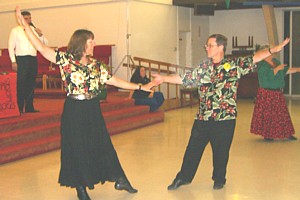My good friend
Bill M is helping contact pastors regarding the
Harvest Crusade that will take place in San Jose later this year.
He said he is contacting pastors of "evangelical" churches. I asked him what is an "evangelical" church. We tossed it back and forth for a while, but we didn't really come to a firm decision. In the end, we decided that pastors of non-evangelical churches would probably "self-select out" of involvement in the Harvest Crusade. That is, pastors that choose to be involved are probably evangelical, and pastors that choose not to be involved are probably not evangelical.
It can be confusing. "Evangelical" is not the same as "fundamentalist" is not the same as "right-wing" is not the same as "moral majority" (or whatever they like to call themselves these days). And some churches that call themselves evangelical, like the
Evangelical Lutheran Church in America, might have their evangelical credentials questioned others in the movement.
The term
fundamentalist refers to churches who believe the Bible is totally without error. These include most Pentecostal and Baptist churches.
The term
moral majority refers to churches who oppose abortion and homosexuality. It includes some non-evangelical Christian churches, for example Catholics, and some non-Christian groups, for example Mormons.
The term
right-wing refers to churches who align themsevles with right-wing political ideals. This goes beyond "moral majority" politics because it includes support for defense and war, support for the death penalty, opposition to immigration, and other right-wing political ideals.
But the term
evangelical does not allow such a simple definition. Some would try to say that any church that believes in the gospel is evangelical. But many non-evangelical churches, like Episcopal, Methodist, and Catholic, believe in the gospel. And they believe in preaching the gospel. And they would like to think of themselves as evangelical, even if they are excluded by other churches that
call themselves evangelical.
Historians David Bebbington, Mark Noll, and George Rawlyk have identified four characteristic marks of "evangelicalism":
- a stress on conversion,
- a focus on Christ's redeeming work as the core of biblical Christianity,
- an acknowledgment of the Bible as the supreme authority, and
- an energetic and personal approach to social engagement and evangelism.
I'd say that overall this is a reasonable starting point for a definition. But it does seem to work by principle of exclusion. In other words, it defines evangelicalism by contrasting it to what it is not.
The focus on Christ's redeeming work excludes some groups that would like to call themselves Christian, such as Unitarians, Mormons, and Jehovah's Witnesses.
The acknowledgement of the Bible as supreme authority is a device that goes back to the reformation of the 1500's, designed specifically to exclude Catholics.
The stress on conversion is the requirement that is most germane to the upcoming Harvest Crusade. Why would a group that doesn't believe in conversion support an outreach that attempts to convert people? It may surprise you that some Christian groups do not overtly believe in conversion. Many groups believe in catechism ... that is, if you teach the gospel to children and young adults, they will "grow into" a relationship with God, without the need for any conversion experience. Gerberding, in /The Way of Salvation in the Lutheran Church,/ (Lutheran Publication Society, 1887) says exactly this.
(The book is available online through Project Gutenberg.) In general, Catholic, Lutheran, and Anglican/Episcopal churches do not believe in conversion. Reformed and Presbyterian churches claim to believe in conversion but many do not act like it ... and some extreme Calvinist churches say that "choosing Christ" is impossible because predestination requires that Christ choose you instead.
Personal social engagement and evangelism seems to exclude just about everyone. Most Christians believe in personal engagement but do not practice it. Most conservative Christians (those who believe in a personal relationship with Jesus) claim to believe in evangelism but few practice it. Most liberal Christians (those who believe in living like Jesus did) believe in social engagement but not evangelism. Only missionaries get even close to doing this.
But maybe that's the point. It's not enough to just have a personal relationship with Jesus, one must also "be Jesus" to the world without. And it's not enough to want to live according to the ethical ideals of Jesus, one must also have the personal relationship with Jesus that makes that kind of lifestyle possible.
(The Christianity Today article is about Richard Baxter; it is worthwhile in and of itself, and it describes these four characteristics of evangelicalism as they were displayed in Baxter's life.)

